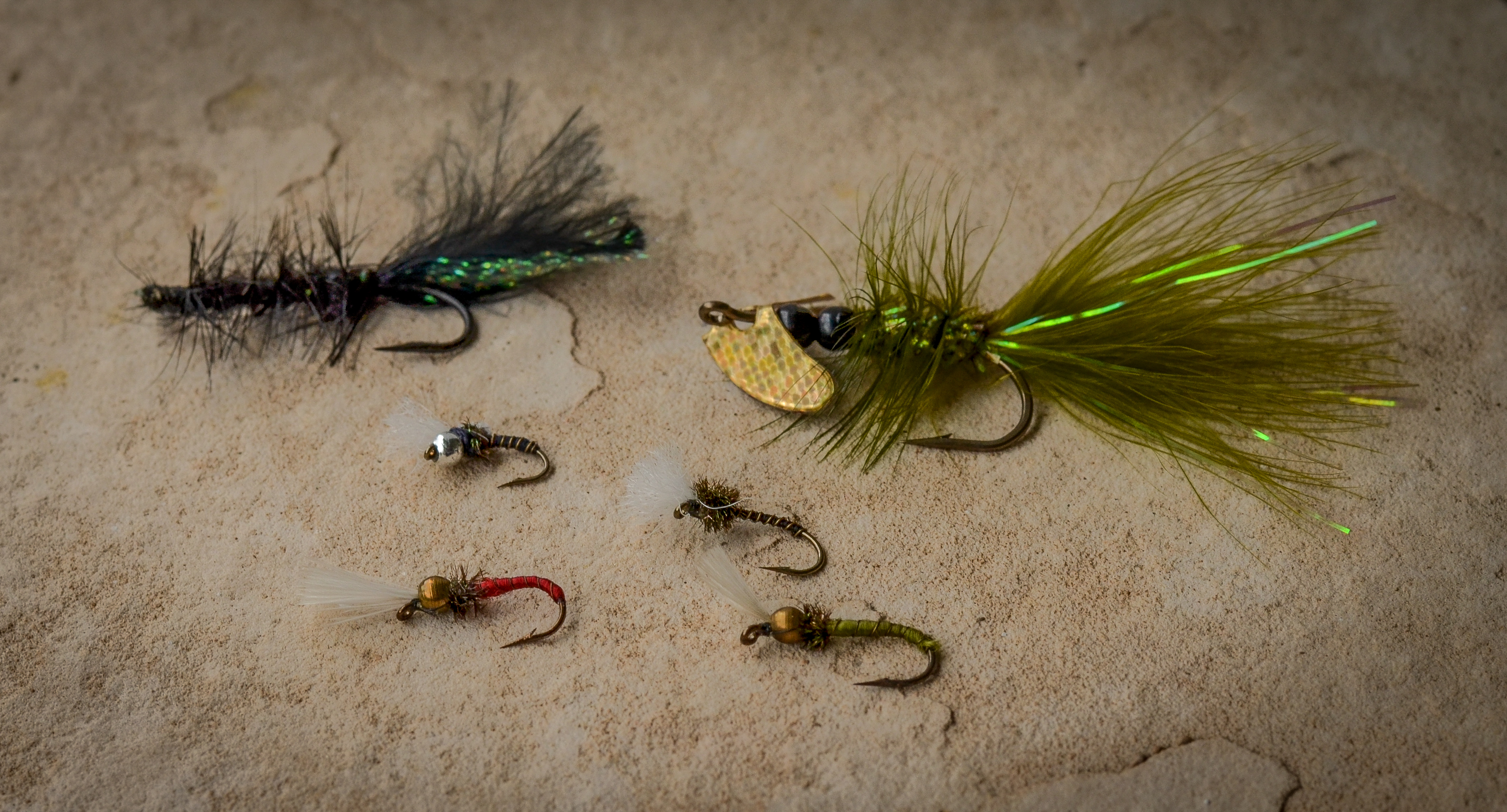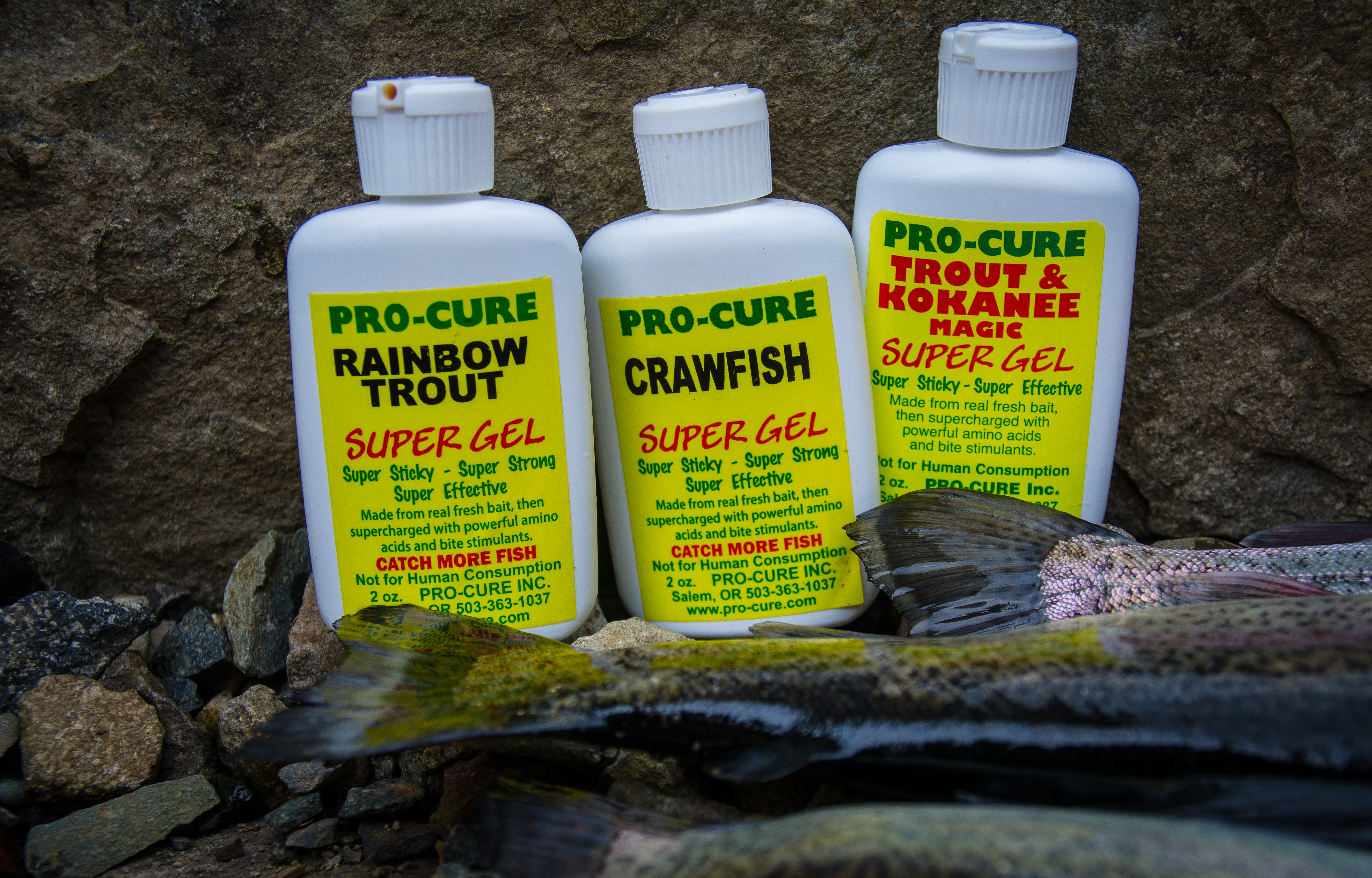Search
Latest Articles
Opening Day Trout Lakes the Day After
by Jason Brooks, May 05, 2019
With the recent plants and opening day chaos behind us the trout start to settle down a bit. As they become acclimated to the lake they will spread out and start foraging on natural foods instead of always looking to the sky for the hatchery manager to broadcast some feed pellets from above. Fly fishing is one of the best ways to keep catching trout after opening day. You don’t have to be a purist fly angler to use this technique either. Trolling flies with a lightweight Kokanee rod such as the St. Croix Wild River series rods is a great way to sit back and let the gear work for you. When trolling flies using standard trolling gear it is best to use a “wet fly” such as a Carey Special, Whooly Bugger or a Smile Blade Fly by Mack’s Lure. This last one is a whooly bugger that has a small smile blade on a bead just below the eye of the hook. Acting as both an attractor as well as a food staple the blade flashes and also creates a bit of turbulence recreating a bug swimming in the water.
For those that like to fling the fly rods then working areas with cattails, shallow flats, and coves means emergers like chironomids, blood worms, and gold bead hares ears. A small indicator really helps and using a dropper fly doubles your chances of a bite. One nice thing about this technique is the use of a float tube or lake pontoon. You can get to the lake with your hatchback car and still get out on the water. Since the lakes are often void of other anglers and boats you have less worry of wakes and a more enjoyable experience. Another benefit for those using flies, either dry or wet, is that most bugs start to hatch or emerge as the daily temperatures rise. This means a mid-morning and even a mid-afternoon bite. Sleeping in and getting to the lake once the sun is up makes for a nice day. But you should stay until evening when bugs are really active before the temperatures cool and the sun is shaded as it heads to the horizon.
Traditional gear pullers that like to fish small plugs such as the F4 Flatfish, or a wee wiggler by Brads will do well in dark patterns such as frog or black with silver sparkle. But don’t overlook the hot orange colors as well. A recent trip after WDFW planted one of my favorite year around lakes had fish jumping everywhere and one guy pulled up with two rods rigged for trolling a fluorescent orange F4 Flatfish and limited out in less than 45 minutes. Small spoons work well with a cripplure or hum dinger being a top producers in silver, gold or UV color. When it comes to spinners an olive green or black Roostertail by Yakima Bait Company is always rigged on one of my rods. I used to use the Pro-Cure water soluble shrimp oil so it wouldn’t hinder the hackle at the end of the spinner but now Yakima Bait has teamed up with Pro-Cure and they have specific scent made just for the Roostertail spinner.
Using scent is one of the most important things to do when fishing post-opening day. This is because the trout are moving around and exploring the lake. When trolling one trick is to use a downrigger with a Scent Flash filled with one of your favorite scents. The Scent Flash is an in-line flasher by Mack’s Lure that just came to the market this past winter. It separates and creates a scent cavity where you can use the supplied scent pad or use a thicker and sticky gel scent such as Super Gels, with rainbow trout, kokanee, and nightcrawler being some of the best scents to use. The Scent Flash spins just like any other in-line flasher but it also releases scent at the same time which is then mixed in the water by the spinning action of the flasher. This creates a very large scent “cone” out of the back of your boat. Simply attach the Scent Flasher to your downrigger ball and drop it down a few feet. Watch your fish finder and put it down to the depth where most trout seem to be located. If you are using your downriggers then you can run a short leader off of the back of the scent flash and put your downrigger clip on it. That way when you run your lure back behind the boat twenty or thirty feet and then attach it to your downrigger clip the lure will be in the scent “cone” from the Scent Flash flasher.
Regardless if you are trolling flies, plugs, spoons or spinners you should keep your speeds slow. The use of an electric trolling motor helps with the slow speeds and makes the day very enjoyable. Unfortunately, I don’t have an electric motor on my 18-foot boat but I do have a 9.9 horsepower kicker. Switching the prop out to a shallow pitched 4 blade prop allows me to slow down to one mile per hour and if I want to go slower I put out a drift sock.
Once you start catching fish make a note of what is going on with your fish finder, especially if you have a unit that tells you your speed and water temperature. Look at the bottom structure and depth. Trout are a cold water species and a lake will have varying temperatures depending on depth, bottom make-up, and fresh water springs or inlet creeks. An example is a shallow cove that has a muddy bottom. As you near shore the water temperatures warm up and as you move to deep water the water temperatures cool off. The mud will absorb sunlight and warm up and act as a water heater. Start working your way into the cove and look for fish. Conditions can change throughout the day depending on air temperature and even the fishes feeding patterns. Bugs will emerge from the warm mud and the fish might move in to the warmer waters to feed but once they get uncomfortable they might move out to a little deeper water. This is where you need to pay attention to the fish and your electronics. Those that don’t have a fish finder, such as fishing from a pontoon or float tube will notice fish rising or even feel the water temperature with your legs if in a float tube.
One reason why anglers stop fishing after opening day is because they start catching less fish with each outing after that special Saturday and think the lake has been “fished out”. Sure there is less fish in the lake but that doesn’t mean there is no fish in the lake. In reality the fish are just moving and learning to be “fish” since they are no longer in a cement pond with a regular feeding schedule. Good anglers learn to figure out where the fish are and how to get them to bite. If you catch a trout and decide to keep it then open up its stomach. If you find a lot of emerging bugs then you know it was feeding near the bottom where the bugs come out of the mud or weeds. If it is full of dry flies then that fish is feeding near the surface so look for rising trout. This will also help you in determining which flies or even color of lures to use.
Lastly, bait fishing. On opening day we often go out and fish PowerBait or some other bait and catch our limits quickly. After opening day you can still go out and soak some bait but you might find that limits don’t come as fast. If it has been warm out then remember weeds grow rapidly in the springtime, especially milfoil. You need to use a leader long enough to get the bait above the weeds. A slip sinker helps as it allows the fish to take the bait without feeling the resistance of the weight. To get around the weed issue is to fish a slip float. When doing this a floating bait won’t work as well so give the traditional jarred single salmon eggs, nightcrawlers or even a piece of cooked salad shrimp a try.
Since the lakes are open now don’t overlook other species while on the water. May also means spawning bass and crappie fishing can often be found in several lakes with trout in them. As the month wanes on the recreational boaters start to come out. You will want to switch to fishing early in the day and then get off of the water once it gets busy. There are plenty of fish to catch after opening day so go out and give it a try.
Jason Brooks hails from North-Central Washington. The son of a fishing guide, Jason is an avid hunter, angler, outdoor photographer and published writer. He resides in Puyallup with his wife and two boys.




